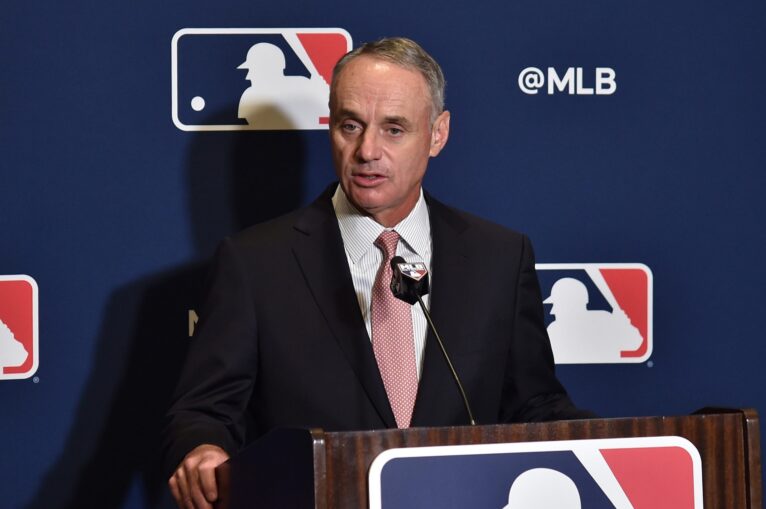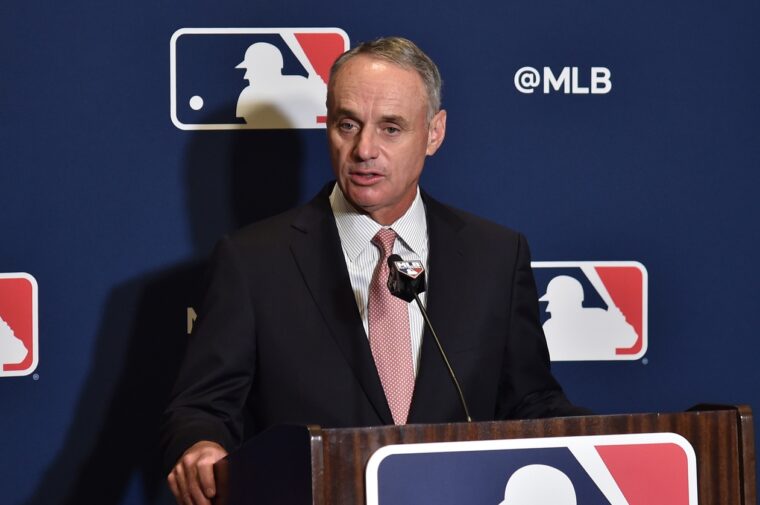
A friend of mine from Long Island called my attention to a column David Lennon of Newsday recently wrote about MLB’s proposed rule changes, several of which will be tested in the minor leagues this season. A few of the possible rule changes were also discussed during Tuesday afternoon’s broadcast of the Mets’ exhibition game against the Houston Astros.
The proposals are generally aimed to speed up the game, put more balls in play, and increase overall fan interest and excitement. Let’s take a look at the key changes being proposed and tested.
Pitch Clock
This one is not new, having been used at the college level since 2011 when there are no runners on base. Pitch clocks were used during MLB spring training games in 2019, and in Double-A and Triple-A during the 2015 season. In both professional scenarios, pitchers had 20 seconds to throw a pitch when there were no runners on base. The results were good in the minor league experiment, as games were shortened by 12 minutes in the 2015 season as compared to games in the same leagues during the 2014 season.
Reaction
I’m not in favor of the pitch clock. While shortened games would be a positive for baseball (let’s face it-game length has been identified as a main reason people are turning away from the sport), I’m not sure altering a pitcher’s routine is the way to get there. I’d be concerned that modified routines could lead to more arm injuries, and there are too many of those now.
Here is an alternative idea. Eliminate all non-playing personnel from entering the field. That means no mound visits from the dugout (pitching changes can be signaled), and no on-field arguments. In none of the other major sports are coaches allowed on the surface of play. Baseball needs to catch up with that.
Increasing the Size of the Bases
The idea is to expand base size from 15 to 18 inches. This one will be tested in Triple-A. According to Lennon’s article, in addition to enhancing safety of the infielders on double-play attempts, making the bases bigger will carry this intended impact.
“The competition committee also expects the shorter distances between bases created by increased size to have a modest impact on the success rate of stolen base attempts and the frequency with which a batter-runner reaches base on ground balls and bunt attempts.”
Reaction
This is a hard “no”. If the bases are three inches closer, there will be an impact on “bang-bang” plays. Think back to close plays that have impacted the outcome of games, and how under the proposed change, those plays could have gone the other way.
I’m in favor of more stolen bases and runners on base, as I believe that would enhance excitement. But tinkering with the fundamental nature of the bases being 90 feet apart? No, let’s find another way.
My friend from Long Island suggests widening first base, with the extra space in foul territory (think about the J.C. Martin play in the 1969 World Series). This would give the runner a chance to stay in the runner’s box and still touch the bag.
Limit Defensive Shifts
This rule will be tested in Double-A and the change will be that at least four infielders will have to have both feet on the infield dirt (expanding it to two fielders on each side of second base is possible, but not in the current test model).
This will prevent a batter from being thrown out by “short fielder”, playing a softball-like position. Francisco Lindor is a known proponent of limiting the shift, as is former Met and current Yankee, Jay Bruce.
“I feel like balls hit 105 miles an hour that are caught by the second baseman playing 270 feet away takes some excitement away from the game.” Bruce said.
Reaction
I do not like the shift, but I do not think that legislating it away is the right move. Teach hitters how to beat the shift by going the other way. Take the single. Help your team by getting on base. That will, in most cases, put a natural stop to the shift. There is more to baseball than home runs. The relentless pursuit of them has, to a large degree, taken some of the action out of the game. Fewer balls are put in play, because home runs and strikeouts are way up. Baseball needs more hitters like Rod Carew, and fewer like Dave Kingman.
Limit Pick-off Attempts
While not discussed in Lennon’s article, this has been talked about as a way to speed up the game. One idea is to allow the pitcher to throw to an occupied base no more than two times per at-bat, and limit the number of times a pitcher can step off the rubber.
Reaction
This rule makes little sense. If a runner knows the pitcher can no longer throw to the base, a runner with decent speed can easily steal a base. As mentioned above, I’m all for increasing stolen bases in the game (players like Lou Brock and Rickey Henderson were very exciting to watch), but this rule would make a mockery of the art. Stolen base records would fall, and the modern-day runners would be setting new records with a sizable advantage over their predecessors.
Commissioner Rob Manfred is trying to use innovation to increase fan interest. For this, he should be commended, as baseball does need to find a way to compete with football and basketball to win over younger fans.
Speeding up the game and having more balls in play are two ways to increase interest and excitement, however, doing so by altering the rules of play would go too far. The sanctity of baseball’s records would be infringed.
Nice try, Mr. Manfred, but it’s back to the drawing board.
















